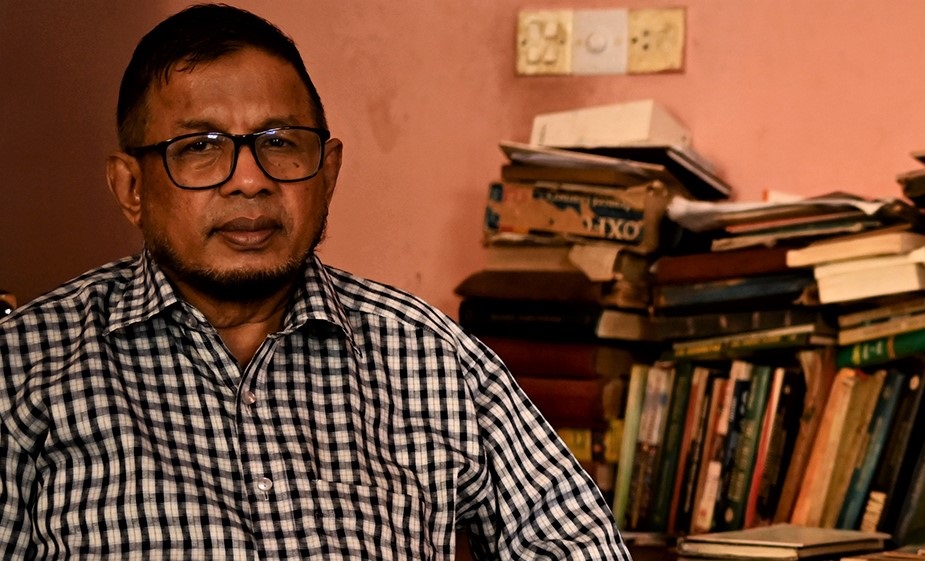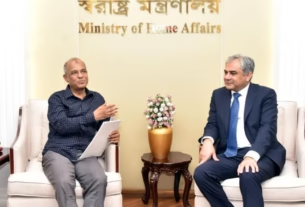By Aman Ullah
Over 600 Rohingya civilians were reportedly massacred by the Arakan Army (AA) in Htan Shauk Kan village, Buthidaung Township, Myanmar, on May 2, 2024. Survivors and reports allege systematic killings, sexual violence, and forced displacement.
The region has long been a flashpoint for ethnic tensions, particularly involving the Rohingya Muslim minority and various armed groups including the Arakan Army (AA) and the Myanmar military. On May 2, 2024, AA troops allegedly carried out a mass killing of over 600 Rohingya civilians, including women, children, the elderly, pregnant women, and persons with disabilities. Survivors described the attack as sudden and brutal, with no warning. Many were killed while attempting to flee. Reports indicate that women were raped, and some were kept as sex slaves at a nearby AA base.
A report by Kaladan Press Network claims the massacre was conducted under official orders from AA leadership, based on testimonies from nineteen Rohingya refugees. Another investigation by Network Myanmar corroborates the timeline and scale of the killings, citing 600 Muslim casualties. Survivors also allege that they were forced to sign declarations denying the massacre, under duress.
Human rights organizations and Rohingya advocacy groups have called for independent investigations, documentation of atrocities, and justice for the victims. The incident adds to the growing list of alleged war crimes and crimes against humanity in Myanmar’s ongoing conflict zones.
A report released by UN High Commissioner for Human Rights Volker Türk on August 29 documented widespread atrocities attributed to the AA. One of the deadliest incidents occurred on May 2, 2024, in Htan Shauk Khan village (Hoinya Seeri), Buthidaung Township, when AA fighters allegedly massacred hundreds of Rohingya. Witnesses recounted villagers being rounded up in paddy fields and executed at close range. Survivors described scenes of a “river of blood,” with one man reporting the loss of 20 relatives, including children.
The rights group Fortify Rights has separately documented a pattern of torture and enforced disappearances of Rohingya men in AA-run detention sites. Humanitarian agencies have also warned that Rohingya communities are facing starvation, worsened by the AA’s actions and ongoing Myanmar military restrictions on aid.
The Burmese Rohingya Organisation UK (BROUK) has formally petitioned an Argentine court to include the Arakan Army (AA) in its universal jurisdiction case on the Rohingya genocide, specifically citing the mass killing in Htan Shauk Kan village.
On September 3, 2025, BROUK submitted a petition to the Federal Court in Buenos Aires, Argentina, to expand its existing universal jurisdiction case on the Rohingya genocide. The petition seeks to include atrocity crimes committed by the Arakan Army (AA), particularly the massacre of over 600 Rohingya civilians in Htan Shauk Kan village on May 2, 2024.
BROUK is requesting arrest warrants for Major General Twan Mrat Naing, Commander-in-Chief of the AA Brigadier General Nyo Twan Awng, Deputy Commander-in-Chief Other senior figures in the AA’s chain of command.
The case is being pursued under universal jurisdiction, a legal principle that allows national courts to prosecute serious crimes against international law — such as genocide, war crimes, and crimes against humanity — regardless of where they were committed or the nationality of the perpetrators or victims.
Argentina has previously accepted jurisdiction over the Rohingya genocide case, making it a rare venue for international accountability efforts.
BROUK argues that the AA, despite being an ethnic armed group, has committed grave human rights abuses against Rohingya civilians, including mass killings, sexual violence, and forced displacement. The group emphasizes that justice must apply to all perpetrators, not just the Myanmar military, and that impunity must end for all actors involved in crimes against the Rohingya.
This legal move marks a significant escalation in international efforts to hold all parties accountable for atrocities in Rakhine State — not just the military junta, but also ethnic armed groups like the AA.
A detailed report by Kaladan Press Network provides a timeline and survivor accounts that implicate AA troops in systematic killings, rape, and abductions, allegedly carried out under official orders from AA leadership. The report also documents how AA troops kept women as sex slaves at a nearby base and targeted civilians indiscriminately.
AA spokesperson Khine Thu Kha dismissed the allegations as “baseless smear campaigns.” Local residents said AA forced villagers to sign declarations blaming the military instead. Video footage reportedly shows such coerced statements.
After photographic evidence of mass killings emerged from Honya Seeri, AA forces reportedly visited nearby Thin Taung village to collect video statements shifting blame onto the junta. Meanwhile, skeletons from the Palm Sanctuary are said to be removed, raising fears of evidence destruction.
According to Rohingya Khobor, survivors claim that after the massacre on May 2, 2024, AA troops burned bodies and homes in Htan Shauk Kan village to eliminate physical evidence of the killings. Witnesses also allege that AA pressured survivors to sign documents denying the massacre, effectively forcing them to participate in a cover-up. These actions are seen as deliberate attempts to obstruct future investigations and evade accountability.
The AA has not publicly acknowledged the massacre or responded to the mounting international pressure. A report by Network Myanmar notes that some AA-affiliated sources have denied the scale of the killings, citing population displacement figures to challenge the 600-death toll. However, these claims have been widely disputed by survivor testimonies and independent investigations.
A detailed report by Kaladan Press Network provides a timeline and survivor accounts that implicate AA troops in systematic killings, rape, and abductions, allegedly carried out under official orders from AA leadership. The report also documents how AA troops kept women as sex slaves at a nearby base and targeted civilians indiscriminately.
These alleged efforts to destroy evidence and silence witnesses could constitute obstruction of justice and additional crimes under international law. They are now part of the broader case being pursued by BROUK in Argentina, which seeks to hold AA leaders accountable under universal jurisdiction.
Attempting to destroy evidence is considered a crime under both international law and many national legal systems, especially when it relates to atrocity crimes like genocide, war crimes, or crimes against humanity.
Under International Law, Obstruction of justice, including destroying evidence, is prohibited under the Rome Statute of the International Criminal Court (ICC). Article 70 of the Rome Statute criminalizes actions that interfere with the administration of justice, including:
Impeding investigations or proceedings
In Universal Jurisdiction Cases, Courts exercising universal jurisdiction — like the one Argentina handling the Rohingya genocide case — can consider evidence destruction as part of a broader pattern of criminal conduct. If a group or individual attempts to cover up mass killings, it strengthens the case for intent, command responsibility, and systematic targeting of civilians.
In National Legal Systems, Most countries treat evidence destruction as a serious offense, especially in criminal cases. Charges may include tampering with evidence, obstruction of justice, or contempt of court. These charges can lead to imprisonment, fines, or enhanced penalties if tied to violent crimes.




